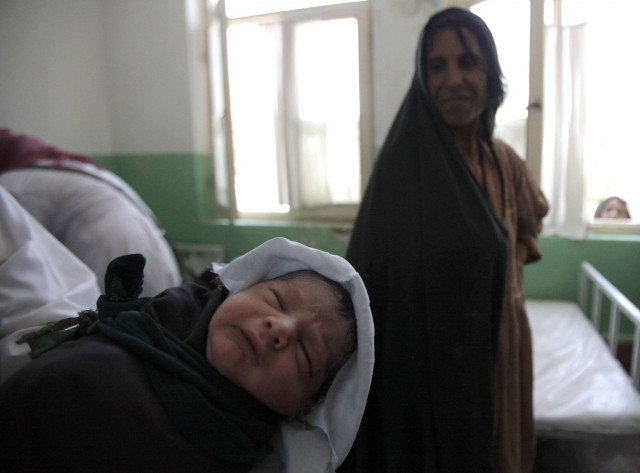
In the world's least developed countries over half of
mothers give birth without any trained help -- compared with
only one percent in Britain -- and some 2 million women face one
of the most frightening days in their life entirely alone.
Some 1,000 mothers and 2,000 newborns die every day as a
result. Another 350,000 trained professionals are needed to save
their lives, the "Missing Midwives" report said.
"It doesn't have to be complicated: someone who knows how to
dry a baby properly and rub its back to help it breathe can make
the difference between life and death," said Save the Children
Chief Executive Justin Forsyth.
"No mother should face giving birth without help."
Of the 8 million children who die each year before the age
of five, one in ten do not even see the end of their first day.
But midwives trained in just eight procedures, including
keeping newborns warm and fed, could immediately cut newborn
deaths by more than a third in the 68 countries with the worst
neonatal mortality rates, the report said.
History suggests these deaths can be avoided. British Prime
Minister David Cameron has highlighted how the introduction of a
British national midwifery programme in the 1930s cut maternal
deaths 80 percent over 15 years.
Some developing countries are now fighting for or have won
support to roll out similar programmes.
In Afghanistan, which has some of the highest risks to both
mothers and children, the number of rural births attended by
trained professionals rose from 6 percent to 19 percent between
2003 and 2006, Save the Children said.
Around 2,400 midwives have joined the workforce and 300 or
400 more graduate each year -- although at this rate it will
still take time to reach the World Health Organisation's
recommended rate of one midwife for every 175 pregnant women.
But the report also warned that resolving the shortage will
require more than just cash for colleges and training schools.
Working as a midwife is not a very attractive profession in
many areas. Despite demand for their services, midwives in the
developing world are often poorly paid and over-worked, or have
to work in remote or even dangerous places.
And rich countries often attract healthcare workers from
poorer nations -- whether through active recruitment or not --
leaving the neediest women short of midwives.
"We are calling on rich and poor country governments to put
health workers at the heart of their plans," Forsyth said,
seeking strong financial and political support for training and
funding more midwives for developing nations. "Without it, mums and babies will continue to die
needlessly every day."


















COMMENTS
Comments are moderated and generally will be posted if they are on-topic and not abusive.
For more information, please see our Comments FAQ